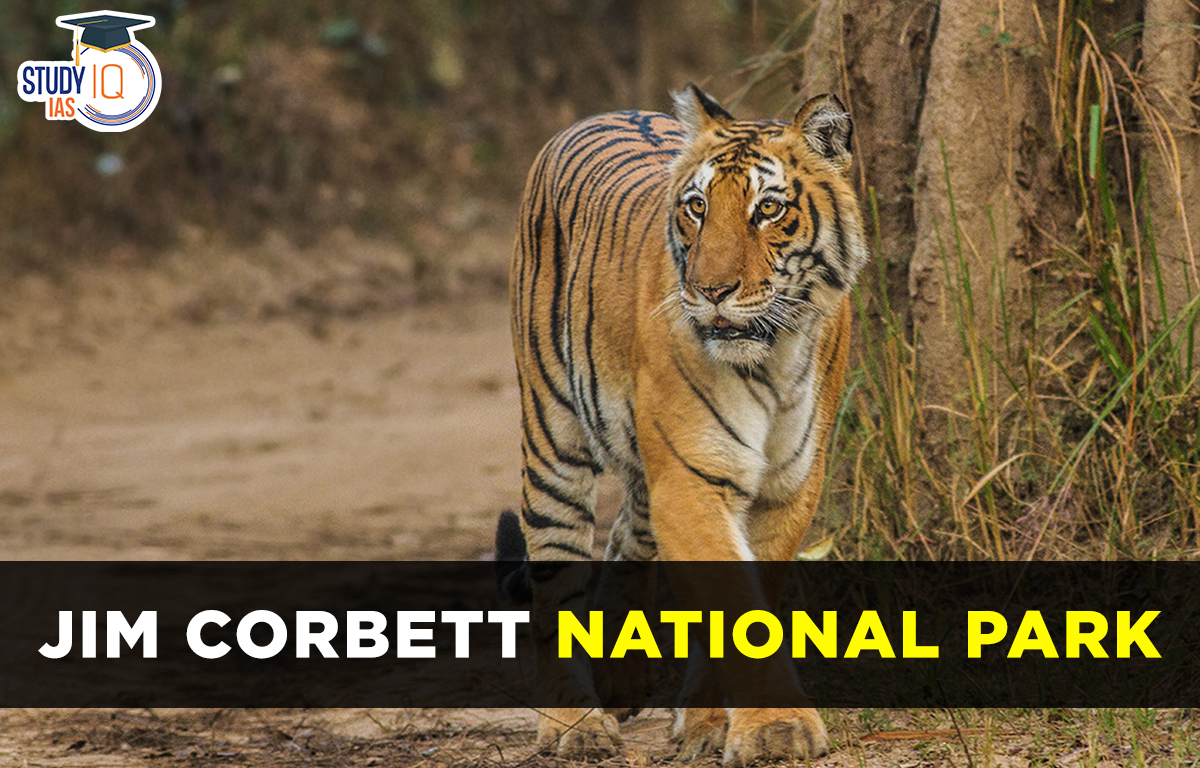Table of Contents
Jim Corbett National Park
The biggest Corbett Tiger Reserve includes the Jim Corbett National Park, which is regarded as India’s oldest and most illustrious National Park. It was established as Hailey National Park in 1936. It is also celebrated as the location of the 1973 start of Project Tiger. It was given this name in remembrance of Jim Corbett, a key figure in the foundation of the group. This article contains all the information related to Jim Corbett National Park, it is important topic of Geography subject of UPSC Syllabus.
Jim Corbett National Park History
The first national park in India was created on August 8th, 1936, and was called Hailey National Park after Sir Malcolm Hailey, who was the United Provinces of British India’s Governor at the time. Initially, the refuge covered an area of about 324 square kilometers. The British government had considered creating a wildlife reserve as early as 1907, but it wasn’t until 1936 that they actually did so with Jim Corbett’s assistance.
Asia’s first national forest is located there. Soon after the park was created, it was forbidden to hunt, slaughter, or capture mammals, reptiles, or birds. In 1954–1955, it was renamed Ramganga National Park, and in 1955–1956, it was renamed Corbett National Park once more. A portion of the park was formerly component of the Tehri Garhwal princely state. It was later acquired by the British and is currently a portion of Uttarakhand. The Uttarakhand state administration now oversees the park.
Jim Corbett National Park Location
Jim Corbett National Park can be found in the Uttarakhand state of India’s Nainital region.
Jim Corbett National Park Facts
The park was included in Project Tiger when the Indian government began it in 1973. The reserve currently spans 1,318.54 square kilometers (509.09 square miles), of which 520 square kilometers (200 square miles) are the core region and 797.72 square kilometers (308 square miles) are the buffer area. The buffer zone, which is made up of reserve forests (496.54 square kilometers (191.72 square miles) and the Sonanadi Wildlife Sanctuary (301.18 square kilometers (116.29 square miles)), separates the core region from Jim Corbett National Park.
The sanctuary is situated halfway between the Terai and the Siwalik Himalayas. Asiatic elephants and Royal Bengal tigers are the park’s most renowned residents. It is one of the richest bird areas in India with over 586 species of resident and migratory birds. The region has been designated as a “Important Bird Area” by Birdlife International. Dhikala, Bijrani, Jhirna, Sonanadi, Durgadevi, and Dhela are the park’s six ecological zones.
The World Wide Fund (WWF) for Nature’s Terai Arc Landscape Program includes the national park as a protected territory. Three of the five flagship species—the Bengal tiger, Asiatic elephant, and Great One-horned rhino—are the focus of this program’s preservation efforts. Ridges, streams, plateaus, ravines, grasslands, deciduous woods, and pine forests make up the park’s varied landscape.
There are 488 different plant types in the park. Numerous migratory birds can be found in the area. The Indian python is one of the 25 kinds of reptiles that it is home to. Crocodiles and gharials are two of the seven amphibian types found in the park. In addition to tigers, Corbett is home to leopards. There are also other animals there, including otters, langurs, rhesus macaques, barking deer, spotted deer, sambar deer, sloths, chitals, and Himalayan black bears.
Jim Corbett National Park UPSC
The state of Uttarakhand in northern India is home to the forested animal refuge known as Jim Corbett National Park. It is well-known for its Bengal lions and is abundant with wildlife. The Dhikala zone is home to a variety of animals, including tigers, leopards, and untamed elephants. Elephants, leopards, and hundreds of different bird species can be found in the Sonanadi zone, which is located on the shores of the Ramganga Reservoir. Visit the official StudyIQ UPSC online coaching website to read and comprehend more about how to prepare for the UPSC exam.


 Goods and Services Tax (GST), Objectives...
Goods and Services Tax (GST), Objectives...
 World Oceans Day 2025, History, Theme, S...
World Oceans Day 2025, History, Theme, S...
 World Environment Day 2025, Theme, Histo...
World Environment Day 2025, Theme, Histo...





















